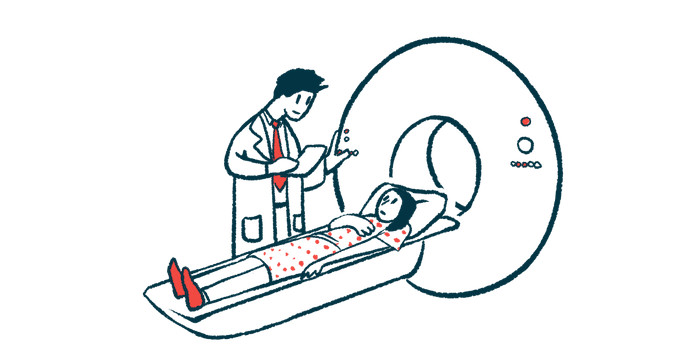New tracer for PET/CT scans may help predict scarring progression
FAPI tracer could be 'promising diagnostic tool' for lung disease in PF
Written by |

Imaging with a tracer that homes in on scar-forming fibroblasts may help predict the progression of pulmonary fibrosis in people with interstitial lung disease (ILD), offering doctors a way to gauge who should be monitored more closely or begin preventive treatment.
That tracer, a radiolabeled form of the fibroblast activation protein inhibitor, or FAPI, performed better than the commonly used 18F-FDG in capturing the early signs of pulmonary fibrosis on PET/CT scans, according to new research.
Qi Fang, a student in resident training in the department of nuclear medicine at Guangzhou Medical University, in China, presented the findings at the 2024 Society of Nuclear Medicine and Molecular Imaging (SNMMI) Annual Meeting, held earlier this month in Canada.
“While 18F-FDG PET/CT can offer some information,” Fang said in a SNMMI press release, “FAPI PET/CT could provide even more information to physicians, especially regarding progressive pulmonary fibrosis. This could make it a promising diagnostic tool.”
An abstract to Fang’s oral presentation, “Comparative Analysis of FDG and FAPI PET/CT Imaging in Interstitial Lung Disease: Focused on Progressive Pulmonary Fibrosis Prediction,” was published in the Journal of Nuclear Medicine.
Testing FAPI vs. 18F-FDG as a tracer for PET/CT scans
Interstitial lung diseases, known simply as ILDs, are a group of conditions in which inflammation and scarring make it hard for the lungs to function. Some conditions, except idiopathic pulmonary fibrosis (IPF), worsen over time despite treatment. Timely diagnosis thus is key, but conventional imaging often misses early signs.
A tracer called 18F-FDG, which contains radioactive glucose (sugar), is often used in PET/CT imaging scans. A small amount of the tracer is injected into a patient’s bloodstream, and a scanner then takes pictures of the body showing which cells are taking up glucose. Cells in inflamed or scarred, fast-growing tissues often take up more glucose than those in healthy tissues — glowing brighter on the pictures.
FDG, however, is not a specific marker, which limits its use for the diagnosis and monitoring of ILD.
Fibroblast activation protein, or FAP, which helps drive inflammation and scarring, is found at high levels in the lungs of people with ILD. Recent work has shown that a radiolabeled form of FAPI, which interacts with FAP, can be used to track cells that have that protein on their surface.
Now, researchers compared FAPI and FDG for their ability to detect signs of pulmonary fibrosis in the lungs of 97 people with ILD. All patients had FAPI and 18F-FDG PET/CT scans within a one-week interval. Their lung function was tested within two months of the scans, and again one year later.
While both FAPI and FDG were taken up by 85 (87%) of the patients, FAPI PET/CT had a significantly higher sensitivity than did 18F-FDG PET/CT (100% vs. 67%). Here, sensitivity refers to how well PET/CT diagnoses progressive pulmonary fibrosis in patients who go on to develop it.
“These findings underscore the potential utility of FAPI PET/CT as an imaging modality for diagnosing ILD,” Fang said.
All PET/CT parameters assessed in FAPI were significantly higher than the corresponding ones when evaluated in FDG.
These findings underscore the potential utility of FAPI PET/CT as an imaging modality for diagnosing ILD.
Of all parameters, “[whole-lung] SUVmean [emerged] as a potentially pivotal parameter,” the researchers wrote. WL-SUVmean is an average measure of the amount of tracer taken up by all cells in the lungs, and it was significantly higher in patients with progressive pulmonary fibrosis than in those without (1.24 vs. 0.73).
“Patients with high whole-lung SUVmean on FAPI scans tend to manifest progressive pulmonary fibrosis one year later. As such, these patients should be more carefully treated, and anti-fibrosis treatment should begin as early as possible,” Fang said.







